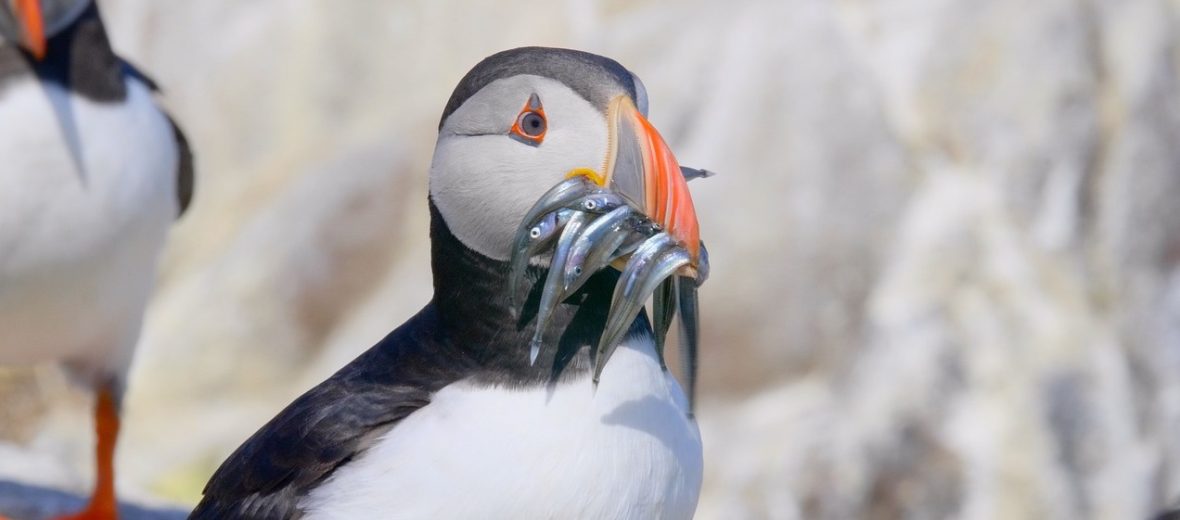
With all the turmoil in the world today, I thought I’d write an article that is on the adorable side. We need more adorable. The puffin is Iceland’s most revered bird. They are also quite the tourist attraction to boot. They have also been observed using tools. Puffins are listed as Vulnerable by the IUCN. Read more about these beautiful and fun birds. Don’t forget to comment below!
First the Stats…
Scientific name: Fratercula
Weight: UP to 1.9 lbs.
Length: Up to 13 inches
Wingspan: Up to 24 inches
Lifespan: Up to 20 years
Now on to the Facts!
1.) There are 4 species of puffins. 3 of the puffin species look like your standard puffin. 1, called a rhinoceros auklet, doesn’t look much like a puffin at all, but technically still is.
2.) A puffin weighs about as much as a can of soda!
3.) Just before winter sets in, puffins shed their colorful outer bill, leaving a behind a smaller and duller beak.
4.) A puffin can fly up to 55 mph!
5.) The puffin’s raspy tongues and spiny palates allow them to grab and hold 10 – 12 fish during one trip.
But wait, there’s more on puffins!
6.) Around 60% of the world’s population of puffins breeds in Iceland.
7.) Puffins spend most of their lives out at sea, resting on the waves when not swimming or flying.
Did you know…?
The name, Fratercula, is derived from the Latin word for “little brother”. The name relates to the bird’s black and white plumage, which was said to look like the robes that monks wore.
8.) The puffin struggles to get in the air, beating its wings 300 – 400 times a minute just to stay in flight! To add to their awkwardness, they also have trouble landing, often crashing into the water or rolling onto the grass, tumbling into any other puffins that may be in their way.
9.) Puffins use their wings to sort of fly underwater while using their feet to control their direction. Puffins are incredible divers and can reach depths of 180 feet on their way to look for food.
10.) Puffins lay just 1 egg per year. Like some penguins, both parents will take turns incubating their egg and caring for the chick, when it hatches.
But wait, there’s still more on puffins!
11.) Puffin chicks are called pufflings.
12.) Puffins are monogamous (mate for life).
Now a Short Puffin Video!
Be sure to share & comment below! Also, check out the Critter Science YouTube channel. Videos added regularly!
Want to suggest a critter for me to write about? Let me know here.
Some source material acquired from: Wikipedia & IUCN




